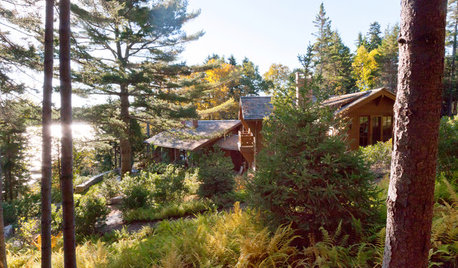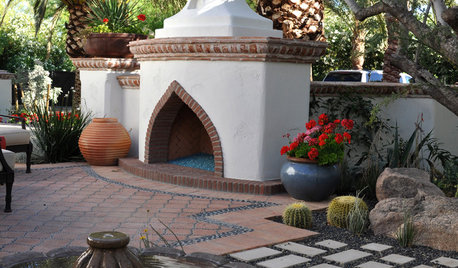Droughts, Not Hurricanes, are Greater Danger
Pamchesbay
11 years ago
Related Stories

MOST POPULARWhat to Do After a Hurricane or Flood
How you treat your home after a natural disaster can make all the difference in its future livability — and your own personal safety
Full Story
GARDENING AND LANDSCAPINGSublime Coastal Woods Gain a Healthy New Foothold in Maine
Erosion was threatening, and much of the wildlife had fled. See how a homeowner and her landscape architect drove back the danger
Full Story
HOUZZ TOURSMy Houzz: Super Efficiency and Serenity Near the Florida Surf
It can withstand a hurricane and earned LEED Platinum certification, but this island home knows how to chill too
Full Story
COASTAL STYLEHow to Make Your Oceanfront Garden Thrive
You may love the beach, but many plants don't. Learn which ones are best for your warm-weather oceanside garden getaway
Full Story
GARDENING GUIDESGarden-Friendly Native Alternatives to Overplanted Exotics
There are lots of gorgeous, wildlife-friendly native plants ready to make an appearance in your garden
Full Story
LANDSCAPE DESIGNGreat Design Plant: Retreat to the Shade of Hardy Catalpa
Big foliage and a towering height provide a shady respite in summer, but that's not all hardy catalpa offers dedicated gardeners
Full Story
ARCHITECTUREWant to Live by the Water? What You Need to Know
Waterside homes can have amazing charm, but you'll have to weather design restrictions, codes and surveys
Full Story
REMODELING GUIDESThe Hidden Problems in Old Houses
Before snatching up an old home, get to know what you’re in for by understanding the potential horrors that lurk below the surface
Full Story
GARDENING GUIDESCreate a Fire-Safe Garden — With Style
Defend your home against wildfire with a well-planned mix of plants, materials and open space
Full Story
MOST POPULAR9 Real Ways You Can Help After a House Fire
Suggestions from someone who lost her home to fire — and experienced the staggering generosity of community
Full StoryMore Discussions






chickencoupe
Okiedawn OK Zone 7
Related Professionals
Ilchester Landscape Architects & Landscape Designers · Belvedere Park Landscape Contractors · El Reno Landscape Contractors · Petaluma Landscape Contractors · Tinton Falls Landscape Contractors · Waldorf Landscape Contractors · Camp Springs Landscape Contractors · Maple Grove Decks, Patios & Outdoor Enclosures · Cincinnati Decks, Patios & Outdoor Enclosures · Clemmons Decks, Patios & Outdoor Enclosures · Crystal Lake Decks, Patios & Outdoor Enclosures · High Point Decks, Patios & Outdoor Enclosures · Issaquah Decks, Patios & Outdoor Enclosures · Kansas City Decks, Patios & Outdoor Enclosures · Somerville Decks, Patios & Outdoor Enclosuressusanlynne48
PamchesbayOriginal Author
Waurika
Lisa_H OK
PamchesbayOriginal Author
chickencoupe
Lisa_H OK
chriser
Waurika
Waurika
Okiedawn OK Zone 7
PamchesbayOriginal Author
Waurika